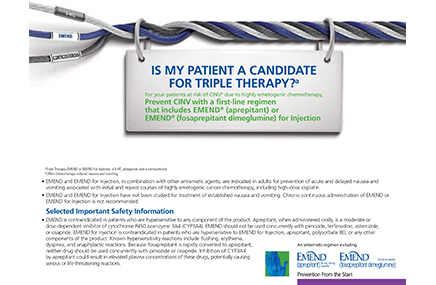Biolumina president Ane Jones wants to clear up a misperception: “We never set out to be an oncology agency. Really, we didn’t.” She says this almost apologetically, rather than with the bemusement of the wrongly labeled. She just wants it on the record, especially as the agency, on the eve of its fifth birthday, continues to diversify beyond that perceived focus.
“Going in so deep on oncology, that wasn’t intentional. We just had so much oncology ability on our team—which is a little ironic, given that so many agencies struggle to get into that space,” Jones says. She also points to problems with being anointed the top agency in a therapeutic subcategory: “It becomes limiting from a client conflict perspective. And besides, sometimes people just want to work on something different.”
These, perhaps, were the motivating factors behind the diversification push that occupied much of Biolumina’s attention over the last year. Regardless of the motivations for that cross-category walkabout, however, it went exceedingly well. Biolumina added endocrinology and hematology to its slate, and made further headway within the rare diseases niche.
Besides, Jones says, it wasn’t as much of a leap as it sounds: “Being in oncology has given us so much strength and experience working on brands that are science-focused. I think that translates well for work within other categories.”
While Biolumina generally doesn’t reveal its clients or assignments, the firm added work from biopharm specialists Santarus on cholesterol drug Fenoglide and diabetes drugs Cycloset and Glumetza. It handled a pair of Novartis products in the rare-disease space, Signifor (for Cushing’s disease) and Jakavi (for blood cancer) and devised a renal cell carcinoma disease education web site for AVEO/Astellas. Even when pressed, Jones can’t—or won’t—point to a piece of work of which she’s singularly proud. “Come on, we’re always proud,” she says with a laugh. “We try to weed out the stuff we wouldn’t be proud of.”
The growth at Biolumina wasn’t limited to expansion into new therapeutic categories. The firm opened two new outposts: a full office in Paris and what Jones calls “more of a satellite office” in San Francisco. The Paris move was fueled by a desire to “have a truly competitive service offering in Europe,” Jones says. “If you want to be competitive there, you have to have people on the ground. It was a little bit of a leap of faith.”
The opening of the San Francisco office, on the other hand, speaks to the continued growth of Biolumina’s longstanding relationship with Genentech. “We’ve had annual discussions with them—‘Do you see a need for having some of our people out there?’ This time, everybody felt it made sense,” Jones explains.
To fill offices old and new, headcount rose from 100 to 130 and the executive hierarchy grew. Notably, Jennifer Strassburger came from Saatchi & Saatchi Health to serve as SVP, director of strategic planning, helming the agency’s new strategic planning department.
Biolumina isn’t done expanding its offerings. Perhaps emboldened by the success in endocrinology and hematology, the firm has targeted a trio of therapeutic areas—neurology, nephrology and immunology—as potential areas for growth. But for Jones, it won’t be enough to merely gain a foothold in these categories.
“We’re going to commit,” she promises. “My ambition isn’t for Biolumina to be the biggest agency—it’s to be the best.”
From the July 01, 2013 Issue of MM+M - Medical Marketing and Media








